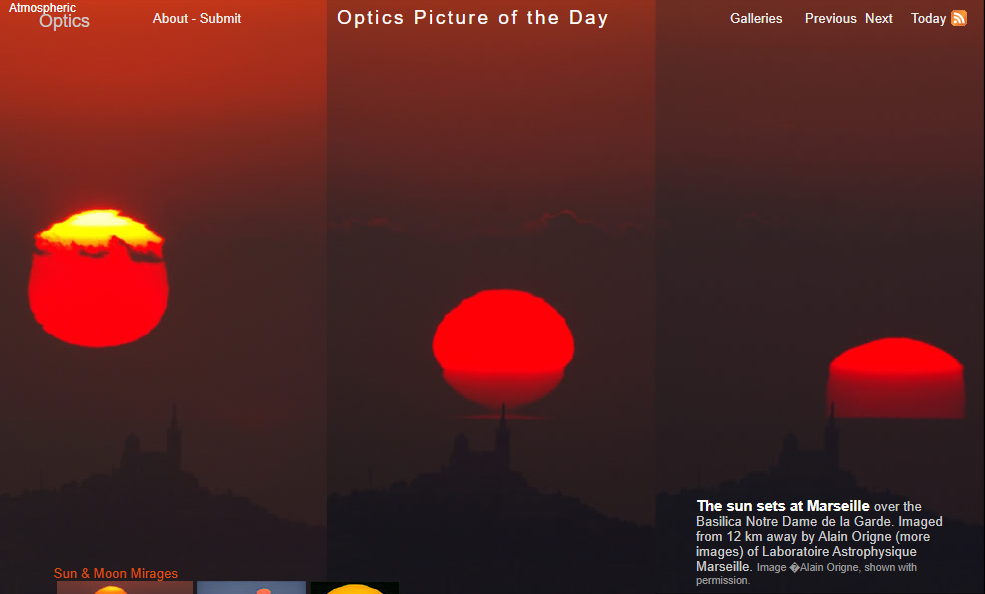Distorted sunset
Distorted Sunset: A Spectacular Display of Atmospheric Optics
Sunsets are a beloved natural phenomenon that captivates people all over the world. While most sunsets offer a stunning array of colors, some are more extraordinary than others. One such phenomenon is the distorted sunset, which occurs when atmospheric conditions create a dramatic and surreal effect on the appearance of the setting sun. In this article, we will delve into the fascinating world of distorted sunsets, exploring the causes behind this captivating display of atmospheric optics.
The Pollution Filter: A Curtain of Reds
One of the primary factors that contribute to a distorted sunset is pollution. When pollution levels are high, particularly in urban areas, it acts as a strong filter in the atmosphere. This filter allows only certain wavelengths of light to pass through, resulting in a limited color palette during sunset. In the case of distorted sunsets, the pollution filter predominantly allows red light to pass through, creating a striking and intense red hue that dominates the sky.
The Changing Shapes of the Sun
In addition to the vibrant red coloration, distorted sunsets often present the sun in various intriguing shapes. As the sunlight passes through layers of pollutants and atmospheric particles, it undergoes refraction and scattering, leading to the distortion of its shape. The sun can appear like a cauldron, a beer mug, an Etruscan vase mirage, or even a barrel. These distortions add an extra layer of visual interest to the already mesmerizing sunset.
Atmospheric Optics: Explaining the Phenomenon
To fully understand the mechanics behind distorted sunsets, we must explore the principles of atmospheric optics. This branch of science focuses on the interaction of light with the Earth's atmosphere. Various optical phenomena, such as refraction, scattering, and diffraction, play a crucial role in shaping the appearance of the sun during a sunset.
Refraction: Bending the Sun's Rays
Refraction occurs when light passes through different mediums with varying densities. In the case of a distorted sunset, the sunlight undergoes refraction as it traverses the layers of the polluted atmosphere. This bending of light rays alters the path of the sunlight, leading to the unusual shapes observed in the setting sun.
Scattering: The Dispersion of Light
Scattering is another fundamental process in atmospheric optics. It refers to the redirection of light in different directions as it encounters particles or molecules in the atmosphere. During a distorted sunset, the scattered light interacts with the pollution particles, causing the dominant red hues to be scattered across the sky. This scattering effect enhances the intensity of the red coloration, creating a visually striking scene.
Diffraction: The Spreading of Light Waves
Diffraction is a phenomenon that occurs when light waves encounter an obstacle or pass through a narrow opening. It causes the waves to bend and spread out. In the context of a distorted sunset, diffraction plays a role in shaping the appearance of the sun by causing it to appear elongated or distorted. This effect adds an element of uniqueness to each distorted sunset, as the diffraction patterns vary depending on atmospheric conditions.
Beyond Distorted Sunsets: Other Atmospheric Optics Marvels
While distorted sunsets are undoubtedly captivating, they are just one example of the countless atmospheric optics marvels that can occur. Here are some other fascinating phenomena that can grace our skies:
- Sun Pillars: Vertical columns of light that appear above or below the sun, caused by the reflection and scattering of sunlight by ice crystals in the atmosphere.
- Rainbows: Arcs of colors that form when sunlight is refracted, reflected, and dispersed by water droplets in the air.
- Halos: Circular rings of light that encircle the sun or moon, created by the refraction and reflection of light by ice crystals or water droplets.
- Green Flashes: Brief flashes of green light that can be seen just before sunrise or after sunset, caused by the refraction of sunlight through the Earth's atmosphere.
Capturing the Beauty: Photographing Distorted Sunsets
Distorted sunsets offer a unique opportunity for photographers to capture breathtaking images. To capture the beauty of a distorted sunset, consider the following tips:
- Use a wide-angle lens to capture the expansive sky and the distorted sun.
- Experiment with different exposure settings to capture the intensity of the red hues.
- Include interesting foreground elements to add depth and context to your photographs.
- Consider shooting during the golden hour, when the light is softer and more atmospheric.
Conclusion
Distorted sunsets are a testament to the awe-inspiring beauty and complexity of atmospheric optics. From the pollution filter that bathes the sky in intense reds to the ever-changing shapes of the sun, these sunsets never fail to captivate our imagination. By understanding the principles of atmospheric optics, we can appreciate and marvel at the incredible phenomena that occur in our skies. So, the next time you witness a distorted sunset, take a moment to soak in its splendor and appreciate the science behind its breathtaking display.

The sun sets at Marseille over the Basilica Notre Dame de la Garde. Imaged from 12 km away by Alain Origne (more images) of Laboratoire Astrophysique Marseille. Image �Alain Origne, shown with permission.
"The pollution above the city made a strong filter and only reds could pass through the atmosphere producing this dramatic effect. The sun has different shapes and looks .in turn. like a cauldron (or a beer mug), an Etruscan vase mirage and a barrel."
Note: this article has been automatically converted from the old site and may not appear as intended. You can find the original article here.
Reference Atmospheric Optics
If you use any of the definitions, information, or data presented on Atmospheric Optics, please copy the link or reference below to properly credit us as the reference source. Thank you!
-
<a href="https://atoptics.co.uk/blog/distorted-sunset/">Distorted sunset</a>
-
"Distorted sunset". Atmospheric Optics. Accessed on November 26, 2024. https://atoptics.co.uk/blog/distorted-sunset/.
-
"Distorted sunset". Atmospheric Optics, https://atoptics.co.uk/blog/distorted-sunset/. Accessed 26 November, 2024
-
Distorted sunset. Atmospheric Optics. Retrieved from https://atoptics.co.uk/blog/distorted-sunset/.